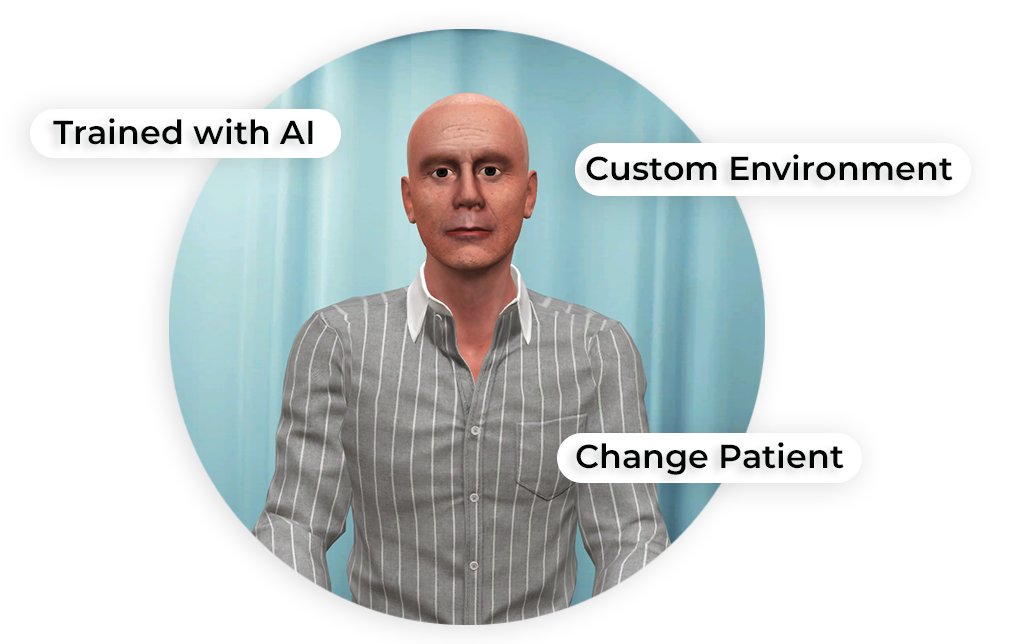Blurry Vision
Available in VR and web browser
This tool for assessing a patient suffering from blurry vision is designed to help learners practice their patient assessment skills.
Employing end-to-end AI and technologies like large language model (LLM) and deep learning, these virtual ‘clients’ possess the ability to respond like real humans. Learners can conduct a completely organic conversation with the client, asking them about their symptoms and problems faced. Based on the client’s responses, a line of diagnosis can be established, and treatment plan formulated.
The MedVR Ed XR Platform provides trainers and instructors with the facility to review conversation logs and analyze learner performance based on customized rubrics. Based on the performance review, trainers will be able to provide precise and effective feedback.
- Understanding the significance of blurry vision and difficulty seeing at night
- Eliciting a detailed history, focusing on ocular signs and symptoms
- Assessing the impact of visual symptoms on the patient’s daily activities
- Identifying risk factors for ocular conditions, such as diabetes, smoking, and age

- Dunphy, L. M., Winland-Brown, J. E., Porter, B. O., & Thomas, D. J. (2022). Primary Care: The Art and Science of Advanced Practice Nursing – an Interprofessional Approach (6th ed.). F.A. Davis Company.
- Jameson, J. L., Fauci, A. S., Kasper, D. L., Hauser, S. L., Longo, D. L., & Loscalzo, J. (2022). Harrison’s Principles of Internal Medicine (21st ed.). McGraw-Hill Education.
Customize Your Case
Build your own AI-Humans patient
MedVR Education is bringing to you a no-code authoring platform to create new patient cases and customized patient history. Put together your own cases by making selections from a wide range of customizing features.
- Create with web-based authoring tool
- Publish in VR, desktop, and mobile devices
- Train your virtual patient by yourself
- Select patient from a diverse background
- Choose preferred virtual environment
- Perform real-time testing
- Track and train new data

 AI Patient Assessment
AI Patient Assessment Natural Language Processing
Natural Language Processing
Case History

Blurry Vision
Seventy-two-year-old George Wilson’s vision has become increasingly blurry over the past one year and he is finding it difficult to see at night. He has noticed a persistent and progressive decline in his vision, along with a sensitivity to light and glare. Wearing glasses is not helping improve vision clarity. Your task, as a healthcare practitioner, is to conduct an assessment of the patient’s symptoms and formulate a diagnostic hypothesis.


